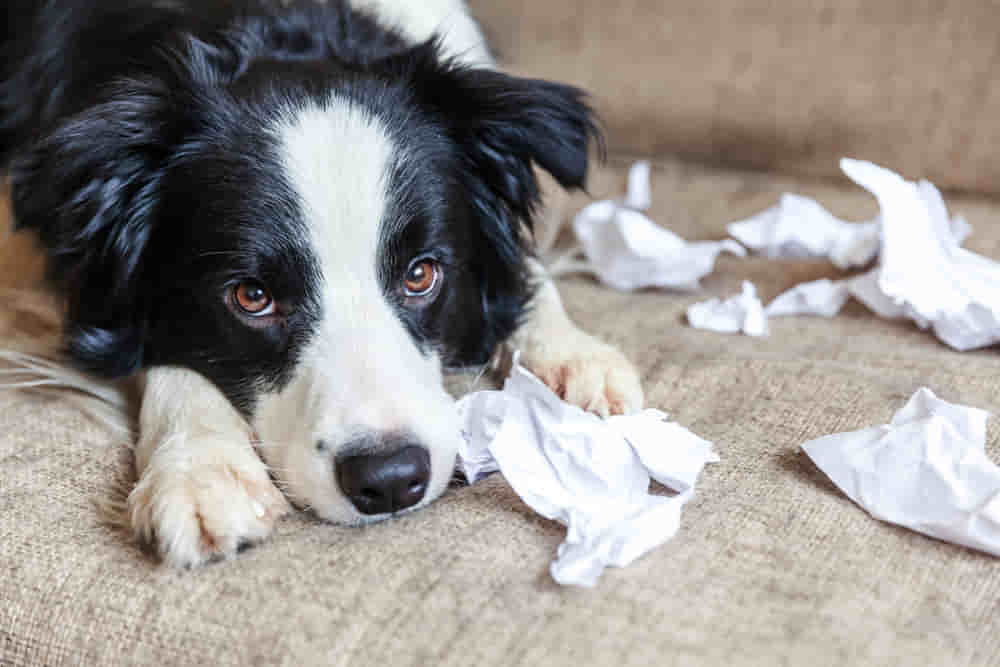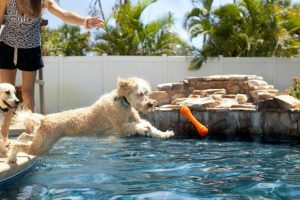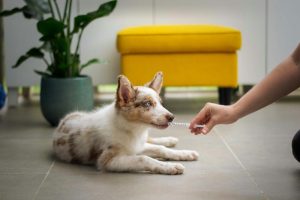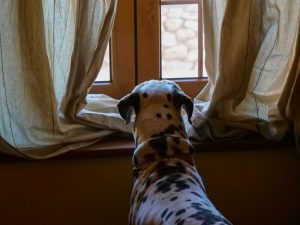Separation anxiety in dogs is triggered when the pet is away from its owner for a duration of time. The condition can cause numerous, prevalent problems for lots of dogs.
With that said, now that we are returning to work following the winter holidays, we will be spending more time away from home. This could lead to an increase in separation anxiety in your dog.
What is Separation Anxiety in Dogs?
Separation anxiety occurs when a dog that is overly attached to its owner – or anyone else – becomes upset when they are eventually left alone for a period of time.

How to Spot Separation Anxiety
Separation anxiety in dogs can manifest in numerous ways. Some of the clear indicators could be frequent barking, howling, destructive behaviour and bladder issues.
However, as the dog is left alone, many signs of separation anxiety can go unnoticed. Therefore many dogs could be suffering from separation anxiety without their owner even realising it. At first glance separation anxiety in dogs may look like they simply need more house training.
It is important to make sure you approach the issue with empathy and care so as to not make your dog more upset and worsen the situation.
4 Common Symptoms of Separation Anxiety
- Destructive behaviour: A clear sign of separation anxiety from your dog can be an increase in destructive behaviour including chewing furniture or digging at doors and windows to escape. This will not only severely damage furniture and even risk any deposit you have on your home, but could also cause serious injury to your dog.
- Persistent barking or howling: Another common symptom that could go amiss by the owner because they are not home could be reports of persistent barking or howling. This could cause frustration for neighbours, cause nearby dogs to bark, and have your household receive a noise complaint.
- Bladder control problems: Separation anxiety can cause dogs to have several toilet accidents including uncontrollable urinating or defecating. However, it is important to note that if this continues while you are present, this could be a sign of a different issue.
- Trying to escape: This occurs when the dog is left alone for a period of time, or left in a confined area. Dogs will attempt to bite and dig at door frames to try to escape. As intuitive creatures, dogs with separation anxiety may spot you attempting to leave the home, and try to escape with you by running through the door as soon as you open it, which can be dangerous.
4 Ways of Treating Your Dog’s Separation Anxiety
- Dog-friendly anti-anxiety medication: Some veterinarians may recommend selective serotonin reuptake inhibitors (SSRIs) to treat your pet, using dog-friendly anti-depressants like Fluoxetine or Clomipramine. Alternatively, you can use natural therapies such as Valerian, which is a flower that acts as a natural sedative.
- Minimise dog’s excitement when leaving or returning: Dogs are very social creatures and can pick up on their owner’s emotions. So, remain calm when leaving your dog or returning home, focusing on getting ready for the first few minutes, and then approaching your furry companion calmly and lovingly.
- Familiarise your dog with your daily routine: Help your dog struggling with separation anxiety by establishing words or actions as part of a routine that will let your pet understand when you are leaving, and more importantly, understand that you will return. Begin with short departures if possible, and work up to leaving for longer periods. This should demonstrate to your dog that you will always return after leaving, and their anxiety should eventually subside.
- Leave a piece of worn clothes for your dog: By doing this, your dog will be able to smell you throughout the day; your scent will provide comfort and ease feelings of anxiety. If you are keeping your dog in a singular room, make sure there is enough space for them to roam and play, with a small pile of worn clothes, to further de-stress your pet.
Dog experts, Kennel Store, have provided the following expert comment for treating dogs with separation anxiety:
“It may take time for your dog to feel comfortable being left alone because they are a very social animal. It is important to remain calm and patient with your dog’s anxiety while you continue with the advice listed.
“While undergoing this process with your furry friend, it may be worth leaving your dog with a family member, friend, or kennel when you are away, where they will be supervised and able to handle the separation anxiety easier. If your dog is experiencing anxiety that is resulting in health issues and injuries, seek assistance from your vet or professional animal behaviour specialist as soon as possible.”






